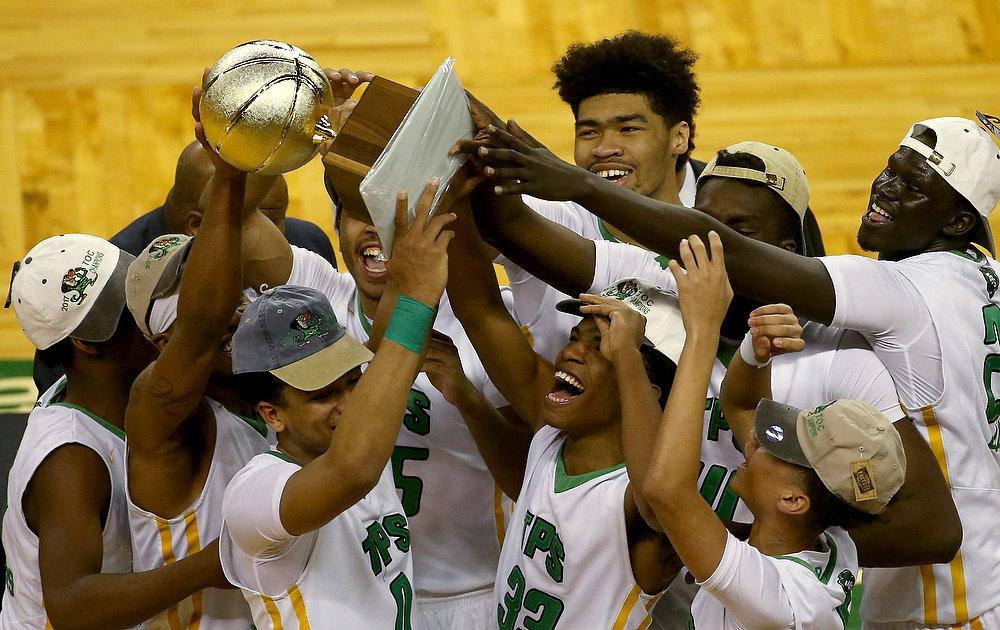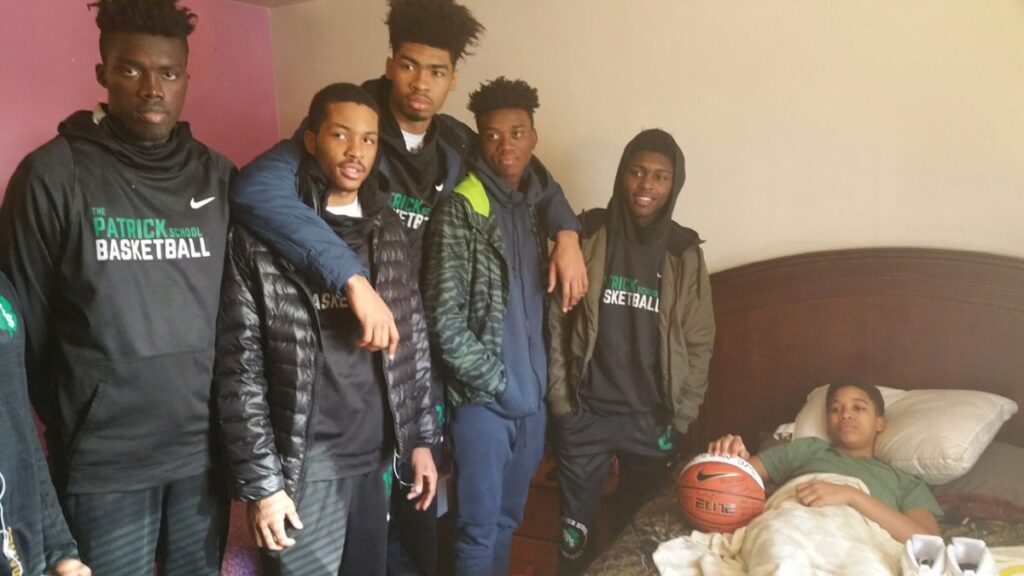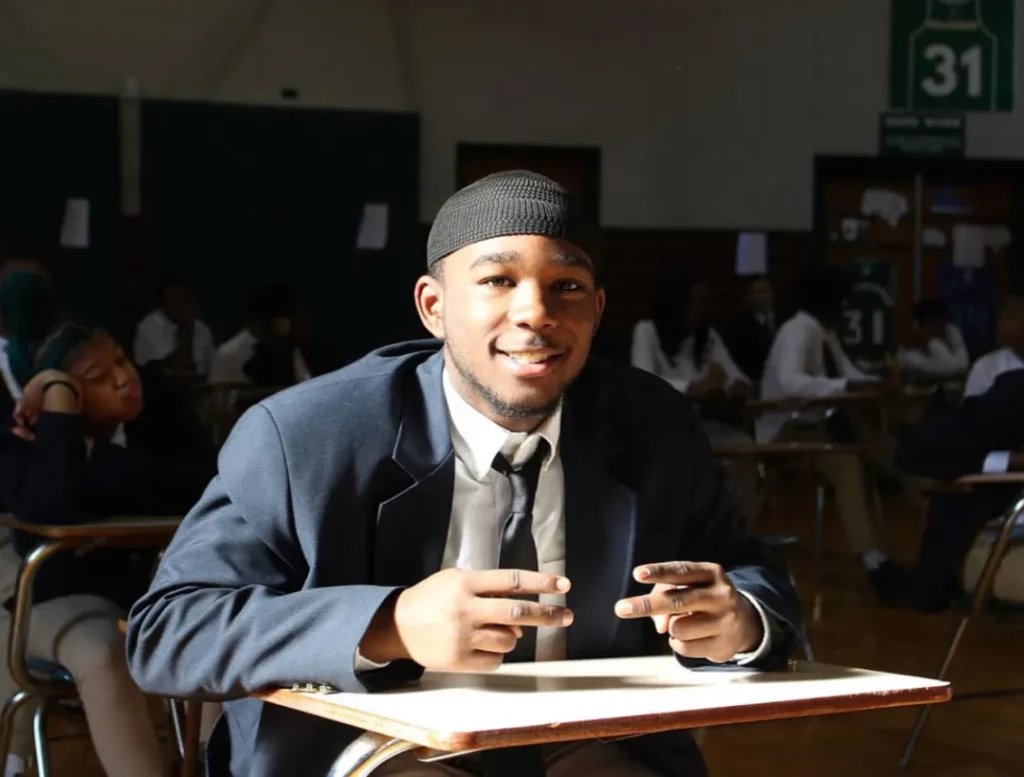STUDENT LIFE

The small, close-knit, family-like community at The Patrick School defines student life. While a college of less than 200 students would feel constraining, this intimate environment of around 160 students works perfectly for the middle school and high school experience. This is the ideal environment for a student during his or her formative years. Being a teenager in the era is difficult, but that transitional period is so much more manageable as a student at The Patrick School. Students benefit from individual attention, the fact that they cannot get “lost in the shuffle” and the feeling of being closely connected to a strong community.
Think about a high school community as a standard size jigsaw puzzle and each student as one of the pieces. At a large high school, with a thousand “pieces to the puzzle”, it is harder to put each element together to build the larger picture. Also, each student makes up only a small part of the overall puzzle. At The Patrick School, all students seamlessly combine into the community, and each student is a large portion of the overall picture.


Students at TPS are not just passive elements in a larger community. The Patrick School has the responsibility of respecting each student’s unique personality and dignity. Moreover, the faculty and staff care about each student and strive to help them grow into educated, responsible, young adults prepared for life in college and beyond. If our TPS students were plants, the faculty provides the “light and water” needed for growth. Each “plant” has different needs, and it is much easier to tend to each individual in a “garden” of only 160 rather than 500 or 1000. Moreover, plants grow better when each has their own space to flourish rather than being cramped in an overcrowded patch of land.
Students at The Patrick School truly enjoy their time here. One of the most difficult challenges the administration faces at the school is getting students to leave on a Friday afternoon when the building must be locked up. Our students want to be here. On weekends, students look forward to Monday morning, when they can return to TPS to be a large “piece of The Patrick School puzzle” where they feel comfortable, accepted, cared for and nourished.

CLUBS & ORGANIZATIONS
Publications
- Yearbook
- School Newspaper
Academic Clubs
- History Club
- Math Club
- National Honor Society
Other Clubs
- Student Government
- Community Service
Girls Athletics
- Basketball
- Cross Country
Boys Athletics
- Basketball
- Cross Country
COLLEGE RESOURCES
Choosing A College
Your Senior Year should be the best year of your life. It should not be dominated by the college search, but rather maintaining a balance that will allow you to participate in all school and extracurricular activities of your choice while laying the groundwork for attending college in the fall. For these reasons, The Patrick School begins guidance on the college search early in the high school career. The school Guidance Counselor is always available to develop an individualized plan and answer questions. Students begin making visits as a group to college fairs during their sophomore year. All prospective college student-athletes have their academic progress monitored by our NCAA Academic Counselor from the beginning of their academic career to ensure that they are taking the right courses, registering for SAT and ACT tests, maintaining the proper GPA and making progress toward becoming academically eligible to accept an NCAA scholarship if offered one. The follow guidelines are a good place to start for all students as they begin to think about college:
Know Yourself:
- Recognize Your Strengths and Weaknesses
- Consider ALL Colleges of Interest
- Look At Your Future With Enthusiasm
Consider Your Reasons For Attending College:
- Personal Goals
- Career Preparation
- Learning Opportunities
- Life Values
- Influence of Family & Friends
Identify College Characteristics Important To YOU:
- Majors & Educational Programs
- Type of School
- Location & Size
- College Affiliation and Accreditation
- Academic Reputation
Investigate & Compare Colleges:
- Prepare A College Comparison Checklist
- Weigh Advantages & Disadvantages
- Contact Admissions Offices
- Plan Your Campus Visits
Checklist For Campus Visits:
- Take A Campus Tour
- Talk With Students & Faculty
- Investigate Your Academic Program
- Meet With An Admissions Counselor
- Verify Admissions Requirements
- Discuss Your Chances For Success
Make Some Decisions:
- Confer With Your Parents & Counselor
- Evaluate Your Options At Each College
- Keep Rethinking Your Goals and Plans
- Show Initiative & Be Assertive
- Select A School That “Fits You” Best
PHILOSOPHY OF DISCIPLINE
The philosophy of discipline at The Patrick School aligns with its core values of Academic Excellence, Moral Integrity, Leadership and Holistic Development. Each student at TPS is expected to display class and dignified conduct during the school day, before school, after school and at external events. Holding our students accountable for proper conduct allows them and their classmates to pursue academic excellence in the classroom and fosters a sense of moral integrity through respect towards others.
We hope that students learn the art of self-discipline and thus display leadership by example to their peers. Finally, encouraging students to respect themselves and others represents an integral component of the holistic development process during their years at The Patrick School.
STUDENT COMMUNITY SERVICE PROGRAM
The Patrick School promotes the principles of Moral Integrity, Leadership and Holistic Development in each of its students. These core values, in addition to Academic Excellence, are an integral part of the development of TPS students. The Community Service Program serves to foster these values by requiring our students to give back to those in need in the surrounding communities through volunteer work.
While TPS sets minimum required hours of service, we hope and expect that students will do even more.
- Seniors: 60 hours per school year
- Juniors: 40 hours per school year
- Sophomores: 20 hours per school year
- Freshman: 10 hours per school year
BELL SCHEDULE
Daily Bell Schedule | Advisories | 8:45 – 8:55 |
|---|---|
Period 1 | 8:57 – 10:07 |
Period 2 | 10:09 – 11:19 |
Period 3 | 11:21 – 12:00 |
Lunch | 12:00 – 12:35 |
Period 4 | 12:35 – 1:00 |
Period 5 | 1:02 – 2:30 |
Delayed Opening Schedule | Advisories | 9:50 – 10:00 |
|---|---|
Period 1 | 10:00 – 11:00 |
Period 2 | 11:02 – 11:52 |
Lunch | 11:54 – 12:26 |
Period 3 | 12:28 – 1:16 |
Period 4 | 1:18 – 2:08 |
Club Day Schedule | Advisories | 8:45 – 8:55 |
|---|---|
Period 1 | 8:57 – 9:56 |
Period 2 | 9:58 – 10:56 |
Period 3 | 10:58 – 11:56 |
Lunch | 11:58 – 12:30 |
Club | 12:32 – 1:32 |
LUNCH PROGRAM
*Local lunch program and vendors
*Grades 9 through 12 have optional off-campus lunch
